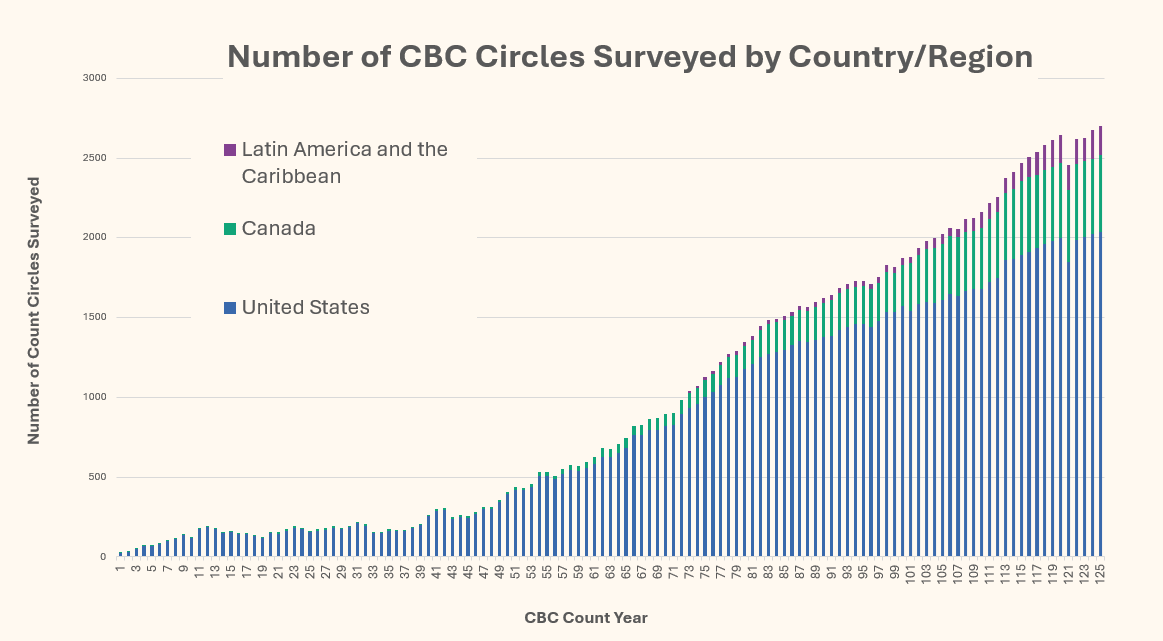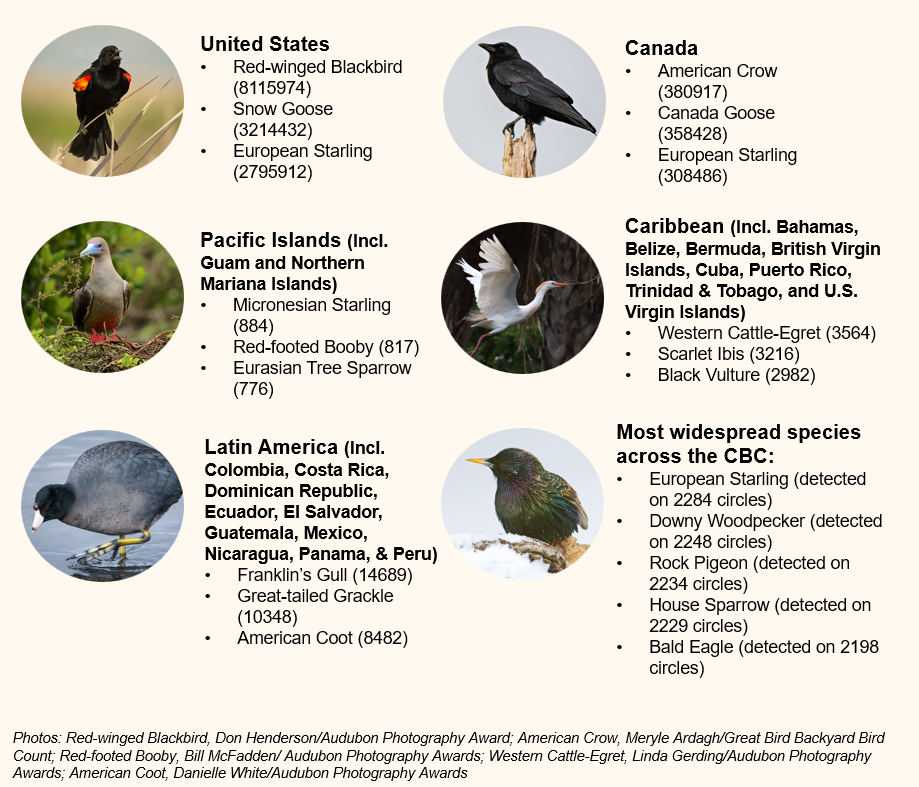
The full written summary for the 125th CBC.
The Christmas Bird Count celebrated its 125th year with a record-breaking count. Over 83,000 participants came together across the hemisphere to count birds as part of one of the longest-running formal community science bird survey in history. You can read the full written summary, the Canadian summary, the U.S. high count article, regional summaries, and the Canadian high count article, or explore all CBC results below.
At 2,693, the 125th CBC had the highest number of circles surveyed yet for the program, surpassing the previous high record of 2,677 during the 124th CBC. Recent decades have seen increasing growth in countries outside of the U.S., beginning with a surge of Canadian counts just after the year 2000 when Birds Canada began partnering with Audubon to facilitate the CBC in Canada. More recent years have seen growth in Latin America and the Caribbean; over the past several years, over half of all of the newly-established circles have been outside of the U.S. and Canada.

Despite consistent increases in the number of circles surveyed and the effort data reported, the total raw counts of birds has been steadily declining. This pattern, most noticeable since the year 2014, is a chilling reminder that bird conservation efforts are more important than ever to slow and ultimately reverse bird declines.

Have you ever wondered which species rule the counts? Here are the birds with the highest tallies for different CBC countries and regions that participated in the CBC this year:

CBC data have been used to support bird conservation in countless ways over the decades. For example, CBC data helped document declines of Peregrine Falcons and other raptors in the 1940s - 60s due to the effects of DDT. More recently, Science published a 2019 study used CBC data and other datasets to describe a grim picture: a steady loss of nearly three billion North American birds since 1970.
Audubon CBC data are also used to measure how birds are responding to climate change. A 2022 Audubon study used 90 years of Christmas Bird Count data to show how birds have shifted amid a century of major environmental changes. A 2021 Audubon study found evidence of climate-influenced winter range changes by several duck species. By tracking how bird ranges have moved over time, conservation efforts can be prioritized in areas that are important for birds today and in a climate- altered future.
![]()
Audubon scientists use CBC data to provide up-to-date processed abundance indices and abundance trends. This information is available via our CBC Trends Viewer. Stay tuned: updated trends and new trends for Latin America and the Caribbean are coming soon!
![]()
To date, over 300 peer-reviewed scientific articles have resulted from analyses done with Christmas Bird Count Data. Visit the CBC bibliography to find examples of studies that have used CBC data, illustrating the value of the work that CBC volunteers provide to the fields of ornithology and conservation science.

The full written summary for the 125th CBC.

The full written summary of the 125th CBC in Canada

A review of all species detected in the United States, and the counts with the highest tallies of species and their forms on CBCs this season.

A review of all species detected in Canada, and the counts with the highest tallies of species and their forms on CBCs this season.

Read annual CBC summaries from states, provinces, and countries across the Western Hemisphere, written by Regional Editors.

View a map with count summaries for all circles included in the 125th CBC.
Our deepest thanks to the tens of thousands of Christmas Bird Count participants, compilers, and regional editors who make this program possible. The CBC is administered by the National Audubon Society and is delivered in Canada by Birds Canada.

Let us send you the latest in bird and conservation news.